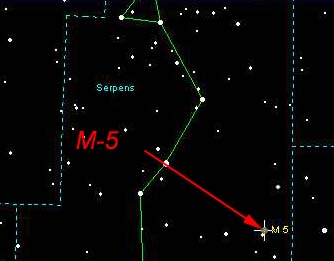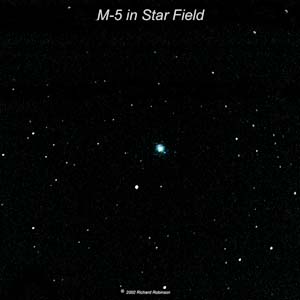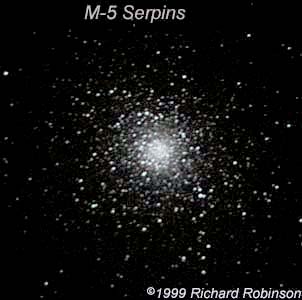|
|
|
|
M-5
is also a large globular. . It may be difficult to find however,
because there are no bright stars nearby. The brightest (Unkalhai
or Alpha Ser) is magnitude 2.6 which can be difficult to see in light polluted
skies. It will give you a nice view if you can locate it though because
it has a nice compact core surrounded my many stars. You should
be able to see it even in a small 90 mm scope. The top image is one
of my early ones while the image taken in 2002 is of much longer exposure
in an attempt to capture the fainter regions of the cluster.
|
|
 |
Size: 22 arcmin Magnitude: 5.7 Magnitude Tip: 12.2 RA: 15h 18m 34s Dec: +02 d 05m 00s |



